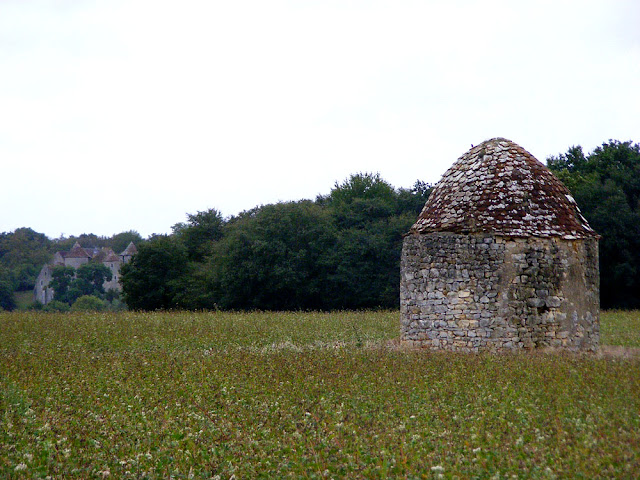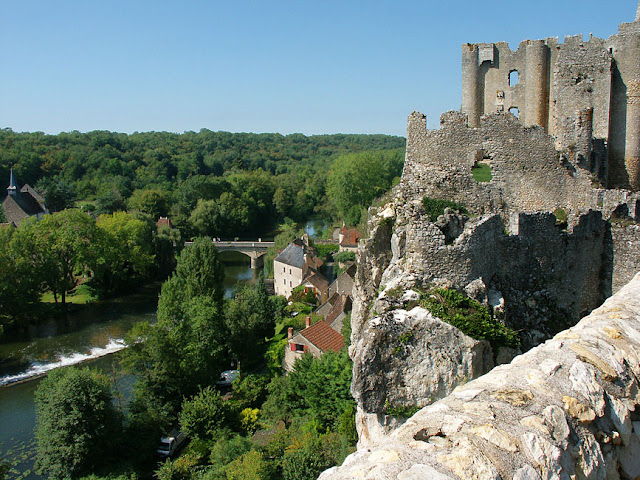Most of the attention in the Loire Valley focuses on the 16th century Renaissance chateaux, but if you step just a little outside the UNESCO World Heritage area you could encounter some entirely different chateaux. I live in the south of the Loire Valley, in what was the old province or duchy of the Touraine. If I want a day out I can go north to the Loire then east along the river, to Chenonceau, Amboise, Chaumont, Blois, Cheverny or Chambord. All names you’ve heard of, and chateaux whose appearance you are familiar with.
But if I go south I end up in the Anglin Valley, and in medieval times the Anglin River was a frontier. This is marcher land, once liberally sprinkled with powerful warlords granted many powers by the French kings in return for protecting French territory against the English in Poitou. Obviously the warlords needed fortresses, and there is a string of them along the river.
Here is a selection of them. Most are not open to the public to see the interiors on a regular basis, but some of them offer accommodation, so if you want to put yourself in a medieval setting and fire up your imagination, I highly recommend a couple of nights in one of these wonderful castles.
Disclaimer: I have no particular connection to these castles, other than I live within easy reach of them and genuinely enjoy visiting the Anglin Valley. I don’t personally know any of the private owners.
 |
| Chateau de Forges. |
Chateau de Forges: Jehan Tyrel de Poix was given the property that would become the Chateau de Forges in 1442 by Charles VII. Today the castle is again owned by the Tyrel de Poix family and offers accommodation. If you stay there remember to ask about how they hid Allied airmen during the Second World War. http://www.chateaudeforges.fr/chambrehotes_en.html
 |
| Chateau de Forges in the background, an unusual vine hut in the foreground. |
 |
| Chateau d’Ingrandes: |
Chateau d’Ingrandes: The original 11-12th century castle here was English, part of Eleanor of Aquitaine’s territory. It was captured by the great French knight Bertrand du Guesclin, and then rebuilt in the 14th and 15th centuries. Today it is owned by the remarkable Jacqueline Drouart. She and her husband bought it in 1982 and were determined to save it. She is now a widow, but her life’s ambition is to finish the restoration, so that it is not a burden on their children when they inherit it. She offers accommodation. https://www.facebook.com/ChateauIngrandes/
 |
| Chateau d’Ingrandes: |
 |
| Chateau de Plaincourault. |
Chateau de Plaincourault: A former stronghold of the Knights Hospitallers although surprisingly, this is a 19th century building. The old chateau fell into such disrepair that it was entirely reconstructed, on the old footprint, in 1872. I have heard that it recently sold for €725 000. It has been a family home, but available for events and filming.
 |
| Angles sur l'Anglin. |
Chateau d’Angles-sur-l’Anglin: The ruins of this castle, built to defend French territory in the 12th century, but taken over by the English in the mid-14th century. It looms over the river on one side and the village on the other. You can follow in the footsteps of the English attackers up the somewhat precarious path ascending the cliff that they took. By the late 14th century it was back in French hands, thanks once again to du Guesclin. The castle is open to the public for visits. https://www.tourisme-vienne.com/en/activite/5/forteresse
 |
| Chateau d'Angles sur l'Anglin. |
We are also on Instagram, so check us out to see a regularly updated selection of our very best photos.

1 comment:
The Tyler de Poix originate in Picardy. So, I'm wondering how and why they were given this chateau in Central France and settled there.
The Plaincourault chateau was rebuilt with taste in the 19th century which is unusual for the period.
My last visit to Angles-sur-l'Anglin goes back eighy years!
Post a Comment